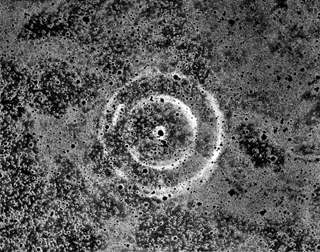Imaging and Imagining Space: A Collaboration Between Art and Science
|
|
|
|
Globular Cluster, 2000
Pamela Bannos
Unique gelatin silver print
Courtesy of the artist
|
|
|
|
|
|
|
 |
|
|
Supernova Echo, 1987
Farhad Zadeh
Monochrome digital Lambda print
Courtesy of the artist
|
|
|
In January 2001, Pamela Bannos, lecturer and artist, and Farhad Zadeh, an observational astrophysics professor, came together to explore each other's perspectives on space in an exhibition at the Mary and Leigh Block Museum of Art, Northwestern University. The exhibition, Imaging and Imagining Space: A Collaboration Between Art and Science, demonstrated that astronomical and artistic photographs may present outer space in surprisingly similar ways. A year later, they discussed their collaboration with science teachers during the Art Institute’s course, Science, Art, and Technology. In this combined effort, Bannos and Zadeh explored visible, invisible, and imagined space through optical telescope pictures, images from X-ray and radio telescopes, and fine-art photographs.
Bannos and Zadeh used contrasting methods but similar visions in choosing images for the exhibition. Bannos’s work seeks to challenge the truth of photographs. Using a projector, enlarger, and materials such as glass, spray paint, paper, vaseline, and mold, she created artistic photographs that resemble astronomical images. The effect of running her fingers through vaseline on glass or shining a flashlight on paper submerged in chemical developer produced ghostly pictures that look strikingly like images taken from a telescope pointed at the stars—so much so that an astronomer who saw one of her works believed it was an actual space image and attempted to classify it as a remnant of a super nova. Although her works are not based on any specific space phenomena, Bannos’s images “convey the essence of what might be."
Unlike Bannos’s work, Zadeh translated digital images directly from space through a telescope into a computer and then turned them into photographs. Zadeh, who received his Ph.D. in astronomy from Columbia University, and spent two years at NASA's Goddard Space Flight Center before he joined the department of physics and astronomy at Northwestern University, used images derived from devices such as the Hubble Space Telescope and radio telescopes. Astronomers typically look at a static image of a galaxy as it moves at a very high speed and produces jets of material emanating from its core. This material follows the motion of the galaxy, and astronomers use this path to determine such aspects as acceleration of particles and radiation emission. Zadeh, in imaging these distant bodies, looked for symmetry and structural details in small-scale systems, such as Saturn's ring, and large-scale systems, such as galaxy clusters, around which to compose his photographs. Speaking about the exhibition of real and imagined photographs of the universe, Zadeh states, "just as one can view a tree versus the forest, this exhibit presents details of nearby objects while displaying a holistic view of distant phenomena.”
Visit Spaceimages.northwestern.edu for additional information on Pamela Bannos and Farhad Zadeh's collaborative exhibition.